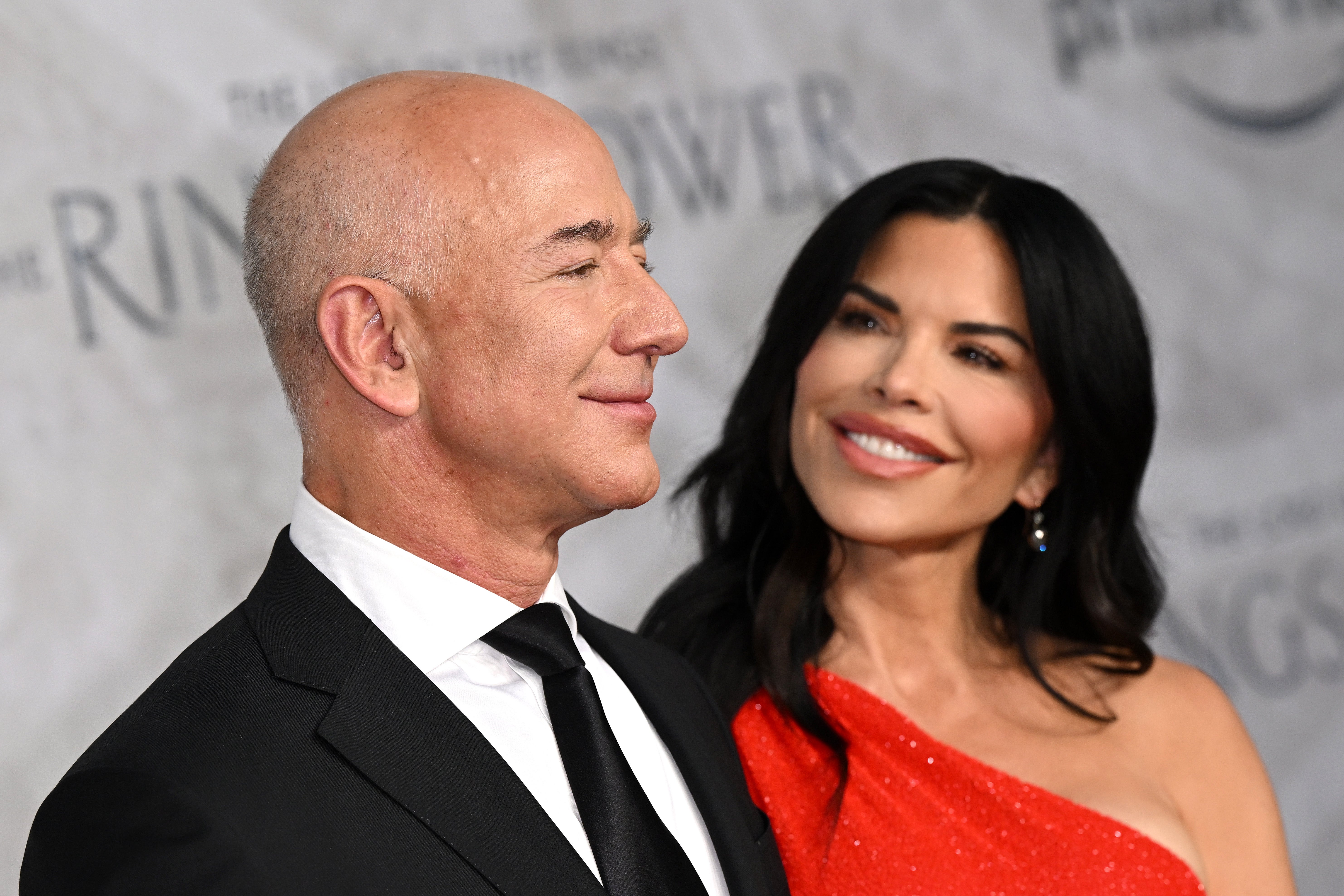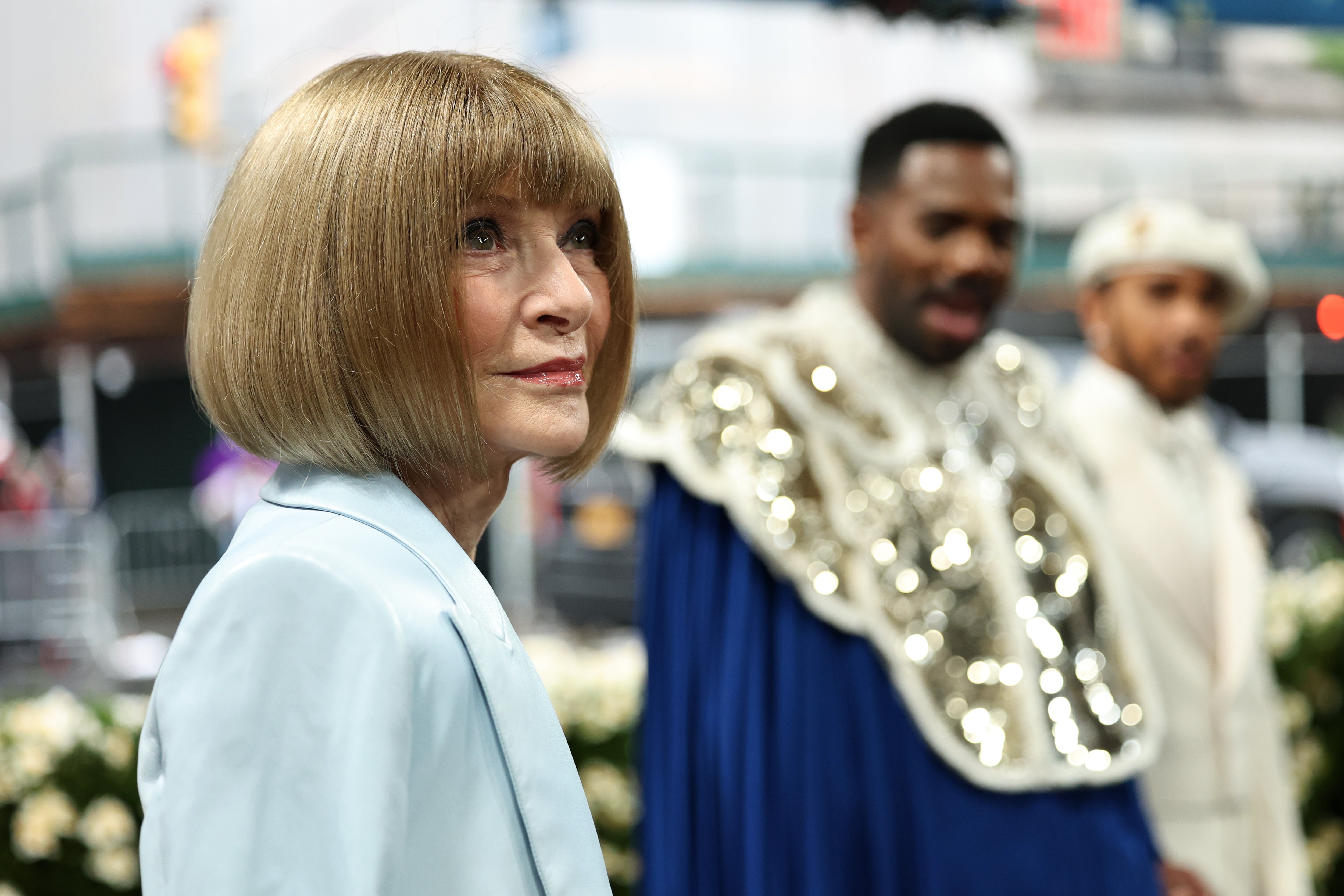Jeff Bezos has given his wife the kind of gift only a billionaire can: a slice of the 2026 Met Gala.
The Metropolitan Museum of Art announced Sunday that next year’s fashion extravaganza will be “made possible” by the world’s third-richest man and his wife, Lauren Sánchez Bezos, who were named as lead sponsors, alongside secondary donors, Condé Nast and Saint Laurent. In their new role, the couple will preside over everything from invites to logistics and overall presentation of the event. I’m imagining couture gowns delivered in Amazon cardboard boxes, the red carpet streamed on Prime Video, and celebrities catapulted into New York on Bezos’s Blue Origin rocketship (okay, the last one might be slightly over-ambitious).
Granted: this is likely Sanchez’s dream rather than that of Bezos. The former journalist is thought to have been instrumental in rebranding her husband from Amazon tech geek to a dinner-jacket-clad member of the global elite. Buying their way into the biggest A-list event in the social calendar seems to be part of a plan for cultural domination.
Expect a very different Met Gala in May. The first change is that their appointment breaks the precedent of having a legacy fashion house as the primary sponsor, which has been crucial to the fabric of the event. As last year’s main sponsor, Louis Vuitton dominated the red carpet by dressing stars including Sabrina Carpenter, Pharrell Williams and Zendaya. The sponsor is also crucial in communicating the direction of the event, so an affiliation with the billionaire Amazon CEO feels left-field, to put it lightly (especially because the online retailer predominantly sells cheap, fast fashion).
Prepare yourself for liberal winks at the delivery empire, too. This isn’t Bezos's first philanthropy rodeo. At a gala for the Council of Fashion Designers of America earlier this year — where the Bezos Earth Fund had partnered on a $6.25 million initiative — one of its hosts, Teyana Taylor, gave a shout-out to Amazon’s two-day shipping. When it comes to parcels and delivery times, subtlety is never on the menu.


As for the guest list, the couple are known to have a big address book. Their excessive star-studded Venice wedding in June – costing a humble sum between $400 million and $500 million – saw Bill Gates, Oprah Winfrey, Leonardo DiCaprio, Ivanka Trump and the Kardashians all in attendance. Could this mean politically aligned business magnates filling out the seats? After all, the couple supported President Donald Trump at his January inauguration; Republican-voting actor Sydney Sweeney also attended the wedding. Why not invite the entire Blue Origin Crew (Katy Perry and co)?
We could perhaps have seen this coming. Just days after the Venice wedding, Sánchez starred on a digital cover of US Vogue in her Dolce & Gabbana couture wedding gown with the cover line: “Here comes the bride!”. What’s more, Sánchez has been pictured at events with Anna Wintour, global editorial director of Vogue and chief content officer of Condé Nast, who has chaired the Met Gala since 1995.
The couple’s Met Gala takeover matters to the arts — but probably not for the philanthropic reasons it's intended. This is an arts institution that — albeit with its Hollywood sheen — has deep roots. Founded in 1948 but renowned fashion publicist Lambert, the event began as a fundraiser for the Met’s Costume Institute, serving as an opening celebration for its annual exhibit. The guest list was largely composed of New York’s social elite, museum trustees and fashion insiders, but there was little celebrity presence.
Under Wintour’s design since the Nineties, the gala has become a red carpet machine that’s more highly anticipated than the Oscars. This is an event that celebrates celebrity on the surface, but also platforms the creatives, makers, designers, stylists and makeup artists behind the starring outfits. Each year, designers — emerging and established — offer their unique interpretation of the new theme and create boundary-pushing, often career-defining, designs that become part of fashion history. In past years, looks have ranged from iconic to outlandish: think of Zendaya’s tulle John Galliano for Maison Margiela for the 2024 theme of “Sleeping Beauties: Reawakening Fashion” or Jared Leto’s 2023 cat costume in homage to the late Karl Lagerfeld and his feline, Choupette.
In the modern age of pop culture, the Met Gala has only become more relevant. While only a select few are allowed access, there’s an entirely different party happening on social media — where legions of fans become armchair fashion critics for one night only, interrogating each look and its value. And then you’ve got influencers like Emma Chamberlain and Amelia Dimoldenberg conducting Instagram-worthy quickfire interviews. Oftentimes, you will come away from the Met Gala having learnt something about fashion history, too — last year’s theme saw the history of Black Dandyism being shared en masse.


Even if the event doesn’t turn out to be a parade of Amazon logos, the meaning of the Bezos sponsorship runs deeper. Sure, this is a fundraising event that has always required corporate funding in the background — the kind of money that only tech companies seem to have these days — but the Bezos takeover underscores a darker shift in culture, where creative platforms, institutions and even media are increasingly controlled by a few power players. Just earlier this year, Bezos’s Amazon MGM Studios secured full creative control of the James Bond franchise, sparking concerns about the future of the franchise.
His cultural domination won’t stop here. It has been suggested that Bezos could one day buy Vogue’s publisher Condé Nast and give his wife some involvement at its prestigious title, though this is merely speculation. Still, it’s not entirely unfathomable, given the financial challenges facing the media industry right now. Whatever the intentions of Bezos and his wife, I’d wager that they're only just beginning.







